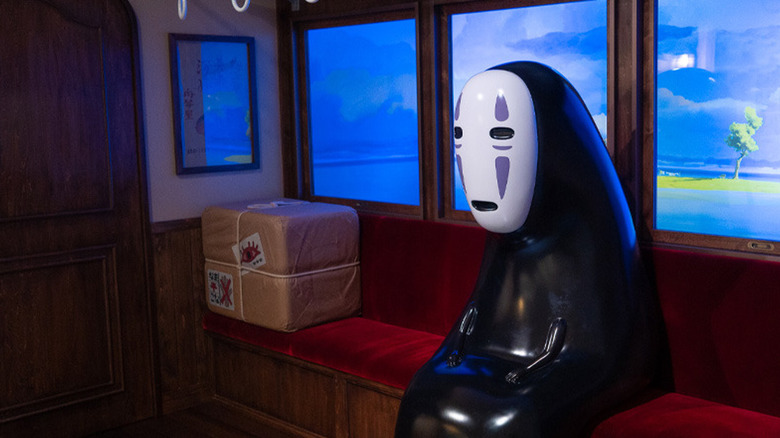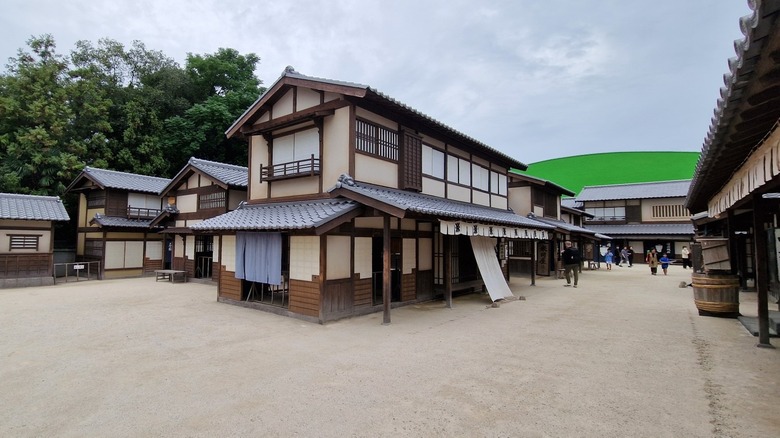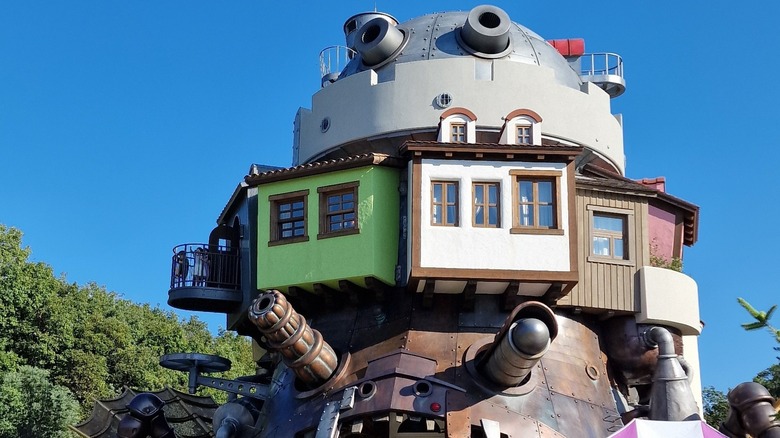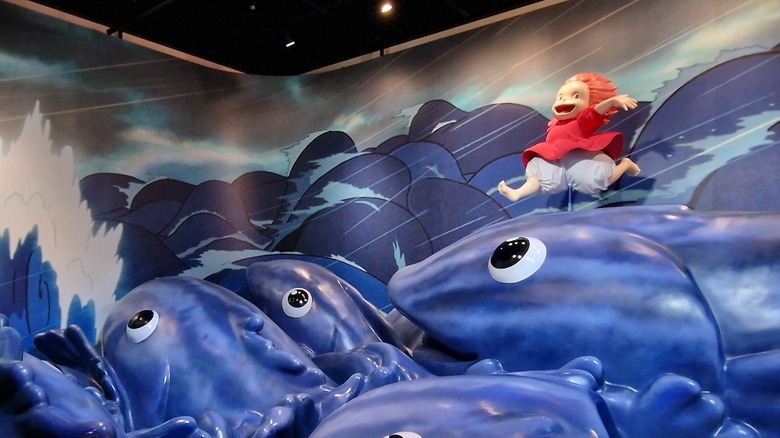Japan's Theme Parks Are Still Doing Something American Parks Have Totally Abandoned
Immersion is the latest buzzword dominating the theme park industry, the concept around which the biggest and most expensive theme park expansions of the past few years are built, from The Wizarding World of Harry Potter at Universal Studios, to Galaxy's Edge at Disney. It's what Disney tried to sell audiences with the "Star Wars" hotel — before it turned into a spectacular failure. The idea that you can step right into your favorite movie, see it brought to life in front of you, and keep the magic alive, rather than unveil the curtain and see these worlds and characters for the craftsmanship that they are is what going to theme parks is all about.
Except, it wasn't always about that. Instead, the very first ideas about what Disneyland and Universal Studios were meant to be are all but forgotten by the big parks. I'm talking about the idea of the park as an extension of the studio — essentially a tour of the studio, a glimpse at how the magic is made. There is one place where those ideas are still key to theme parks, however: Japan. Though Japan does have its own Disneyland and Universal Studios, there are two uniquely Japanese theme parks where that original essence of film studio theme parks remains: the Ghibli Park and the Toei Studio Park.
These theme parks serve to teach fans about filmmaking
The Toei Studio Park opened in 1975 as both a theme park and a film set, located in the actual Kyoto studio for Toei Company. The park has a few rides, like a cool "Neon Genesis Evangelion" ride with a life-size Eva Unit-01, and must-see exhibits about Toei's big history with tokusatsu — with displays of every era of "Kamen Rider" and "Super Sentai" (adapted into "Power Rangers" in the West), a ninja academy for kids, and a terrifying haunted maze during Halloween that is scarier than anything Halloween Horror Nights conjures up.
But the true gem of the Toei Studio Park is its film set. This is the big draw and biggest area of the park, promoted all over its website — a recreation of a town from the Edo period. These are actual film sets that Toei uses in productions, and if attendees are lucky, the might see historical dramas being shot live on location while they're visiting the park. Even without cameras rolling, you can also step right into a period production by renting period-accurate clothes at the park's entrance and become a samurai yourself. It's a cool little way of immersing yourself in the theme of the park while also seeing how films are made and appreciating the importance of set decorations.
Then there's Ghibli Park, truly a one-of-a-kind theme park. From the moment it was announced, it was clear this would not be a Disney competitor, but rather a true extension of the ideals of Studio Ghibli (you can read our review of the park right here).
The Studio Ghibli Park features immersion by evoking reality
The Studio Ghibli Park is as far off from Disneyland as theme parks get. There are no big attractions or rides, no animatronics, costumes, nor parades. There aren't even speakers playing Ghibli music throughout the park. Though immersion is still the goal, it is less about stepping into a Ghibli movie and more about showing attendees how the movies evoke reality. That's because the park, which is divided into different themed areas, genuinely feels like a nature park, rather than artificial areas with fake trees all around. There's even a warning on the official website of wild animals you might encounter throughout the park.
The central piece of the park is the Ghibli Grand Warehouse, which is really a Ghibli museum with a screening room showing Ghibli short films, exhibitions about the history of the studio, and many recreations of popular scenes from Ghibli movies you take photos in. It's less about making it look like "My Neighbor Totoro" brought to life, and more about showing audiences how "My Neighbor Totoro" evokes the reality of the Japanese countryside, while also recreating parts of the movie for photos and immersion — like a stunning recreation of Satsuki and Mei's house from that movie.
The closest thing to actual rides you'll find in the park are a carousel and a flying machine ride located in the Valley of Witches area, which are just a regular carousel and flying machine but decorated with images from Ghibli movies. And yet, it works, because the area does feel like you're stepping into one of the many European-inspired Ghibli movies like "Kiki's Delivery Service" or "Howl's Moving Castle." It helps that there is an incredibly detailed recreation of the titular moving castle you can go inside of. But rather than every single detail of the fictional town Kiki lives in being replicated, the theme park area evokes the reality of the European towns that inspired Hayao Miyazaki when working on the masterpiece "Kiki's Delivery Service" (one of the best movies ever made, as chosen by us).
American theme parks all but abandoned this approach
This approach to immersion, which at every point reminds attendees about the work that went into creating their favorite movies and shows, was once the bread and butter of American theme parks — specifically Disneyland and Universal Studios. The later literally originated as a studio tour for people to witness how movies got made, with some "encounters" thrown in to make it more exciting. It is an idea that still lives on in the Universal Studio Tour, which continues to educate fans about the magic of movies (while still entertaining them).
Even Disney had its own version with Disney–MGM Studios Theme Park, originally meant to be both a theme park and a working production studio with its own backlot and an animation studio. "The Great Movie Ride" was meant to be a look at the history of movies and how they are made.
Except, of course, "The Great Movie Ride" closed, the production facilities are long removed, and there is little about filmmaking at either Disney park. As for Universal, other than the studio tour, there is not much in terms of a peek behind the curtain at the parks. Nintendo World in Hollywood is about video games, not really about filmmaking, while the upcoming Epic Universe promises a truly immersive experience with state-of-the-art animatronics, treating the different themes of the park ("Harry Potter," the Universal Classic Monsters, "How to Train Your Dragon," and Nintendo World) as pieces of intellectual property attendees get to step into like a video game, rather than experience the magic of how these movies (and games) are made.
Still, that spirit of edutainment lives on, even at a much smaller scale, in Japan.



